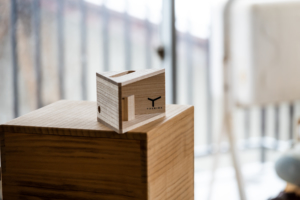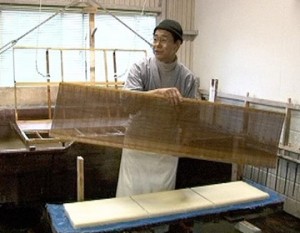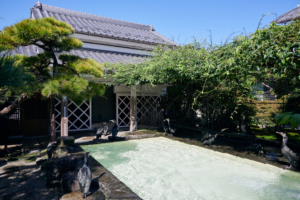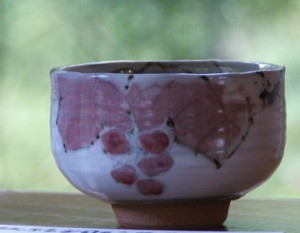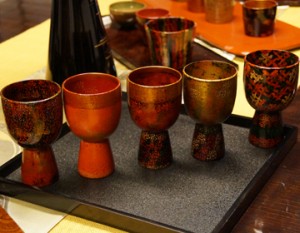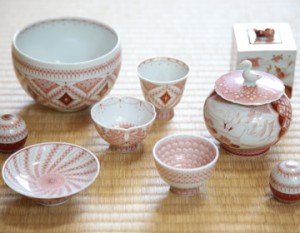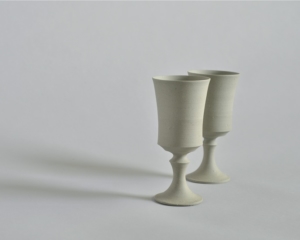Suda Jingka Kiln” of Kutani ware
Kutani ware was first produced in the early Edo period (1655-1868) when Maeda Toshiharu, the first lord of Daishoji Temple and a tea master, discovered ceramic stones used to make porcelain in a mine in his domain in Kutani (present-day Yamanaka Onsen Kutani-machi, Kaga City). By order of the domain, Saijiro Goto, who had learned pottery techniques in Arita, opened a kiln in Kutani Village, which became the production center of the ceramic stone, and the name “Kutani ware” was born.
However, several decades later, in the early 1700s, production ceased. There are no records of this period, and the cause remains a mystery to this day. The pieces fired during this period are later called “kokutani” and remain as masterpieces today, along with “aote,” a style of painting with an impressive array of green pigments, and “gosai te,” a painting technique that freely utilizes green, yellow, purple, dark blue, and red pigments, known as “kutani gozai. The first time the work was made was in 1914, about a hundred years ago.
About 100 years have passed since then. In the late Edo period, porcelain production resumed in Kanazawa and Komatsu, as well as Kutani and Yamashiro in the Daishoji clan, the birthplace of porcelain.
The Suda Seika Kiln in Kaga City was established in 1891 by Suda Seika I. In 1915, Kitaoji Rosanjin visited the kiln and was taught by Suda Seika I. It is said that Suda Seika I taught him how to make ceramics, and that this is what opened his eyes to the fascination of pottery making.

Introducing New Technology to Preserve Traditional Techniques
In a shopfront with a sense of history in the Yamashiro Onsen hot spring resort, there was a line of beautiful, yet somehow rustic, pottery.
Please take a closer look. Even dishes that look the same are different from one another. They may be slightly warped, blotchy, or have finger marks on them. It is more luxurious than something perfectly made, don’t you think? It is pleasant to use dishes that have a different flavor every day, ” says Suda Seika, the fourth generation of Suda Seika.
The fourth generation, who took over Suda Seika in 1981, continues to maintain the pottery techniques of the first generation.
Suda Keika, the fourth generation who took over the reins of Suda Keika in 1981, continues to preserve the pottery making techniques of his predecessor. All pottery is fired in a climbing kiln. We still use the same kiln that was used in the Meiji era. It softens the lines of the pottery,” says Suda.
There are some places that still use climbing kilns for ceramics, but this is the first time I’ve heard of a climbing kiln for porcelain. (Nakada) “Well, it’s not very stable (laughs). (Laughs) “Well, it is not stable (laughs), but there is no failure in pottery. Some people might say that distortion or blurring is a failure, but I don’t think so. Once a maker learns a little technique, he wants to make it look good. However, if a vessel looks like it was made by a machine, it looks fake. I think food tastes better when it is made by human hands,” he says.
The wood-fired climbing kilns burn for several days at times, and the smoke from the kilns has a large impact on the surrounding environment. The climbing kiln near the Suda Jinghua Kiln is covered by a building, and from the outside it does not look like one. There is a row of hot spring inns in the vicinity. …… We fire the kiln four times a year, and we have a special machine in the chimney that burns the smoke with gas so that there is no smoke.” In order to preserve the traditional techniques of pottery making, new smokeless technology is introduced as the times change. This balance between persistence and flexibility is what has spun the tradition of the famous kiln that has continued for more than 100 years. The fourth generation potter’s words resonated with me for some reason: “Even if something is warped or smudged, it is not a failure; it is more luxurious than something perfectly made.






